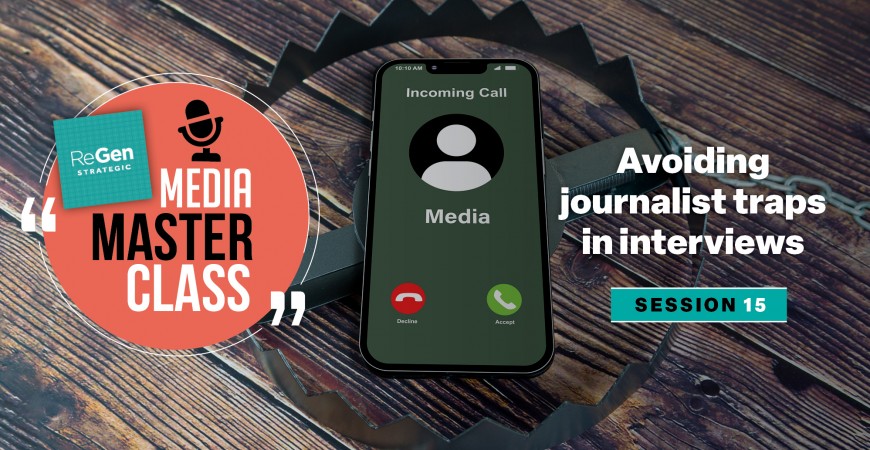In serving the public interest, journalists are sometimes required to push hard in interviews to get the truth out of a source who they suspect is hiding something.
Sometimes that means being blunt and direct, but more often than not, getting the truth is a more subtle endeavour.
Journalists have a range of traps they can set to get the information or response they want out of a source.
When these traps result in an admission from a corrupt politician or leader at a press conference, they serve the public interest. But like all traps, they aren’t always sprung by their intended target and even well-intentioned spokespeople with nothing to hide can be caught out and inadvertently say something that could constitute greenwashing or be inaccurate or defamatory.
Prepared by our veteran team of former journalists, this practical guide will not only explain six common interview traps but also provide a technique to counter each one.
If there’s even the slightest possibility you’ll be asked to face the press on behalf of your organisation, keep reading to improve your chances of protecting your organisation’s interests in the face of media scrutiny.
Rapid-fire questioning is when a journalist hits you with a number of questions at once. This trap is intended to speed you up and make you rush to answer all the questions in one response in the hopes you’ll make a mistake. Instead, choose the question you want to answer and offer only one answer at a time. If a journalist really wants answers to all their questions, they will ask them again.
Interrupting is when journalists cut you off with a new question in the middle of your response to a previous question. The trap in this instance is for you to stop talking and fail to get your point across. This happens a lot at media conferences – this was particularly true during former premier Mark McGowan’s COVID-19 update addresses. As Mr McGowan often demonstrated in these instances, the best response is to ignore the interrupter and politely finish your response to the initial question. Depending on the situation, you can also pause or even apologise to the first journalist before continuing.
Dart throwing is when a journalist throws accusations at you to see if they stick. Whether they are true or not, the trap is designed to elicit an angry reaction and get you to repeat their negative language in your response. In most cases, it’s best to pause before responding and bridge to one of your key messages. However, if the interviewer is passing off an opinion as fact, you shouldn’t hesitate to call them out on it. For example, “I’m not sure who said that, perhaps you could be more specific?” or “That’s certainly not something I’m aware of, can you tell me where that information came from?”
If that doesn’t work, a journalist looking for a particular admission might resort to the merry-go-round, which is when they ask you the same question over and over, in slightly different ways. The trap here is getting angry and refusing to keep responding, which can make you look like you have something to hide. Instead, diffuse the situation by pointing out that you’ve already answered the question to the best of your ability and bridge to a key message. If this occurs at a media conference and the questioning continues to go around in circles, you can also calmly call “last question” to politely end the conference.
Needling is when a journalist doesn’t accept your response and challenges you directly. If you cave in and start back-pedaling, you will have fallen for the journalist’s trap and lose credibility. It’s important to remember that you are the authority on the issue being discussed and the journalist’s job is the play devil’s advocate. If you have prepared for the interview properly, you should be confident in your facts and back up your statement with data or anecdotal evidence.
One of the most subtle traps a journalist can set is the two-part question. This is when the journalist makes a statement, then moves on to a question. If you just answer the question without addressing the statement first, it will be accepted as fact. If the statement is false, or you don’t agree with it, you can avoid this trap by taking a moment to address it first before responding to the actual question.
Knowing these traps is half the battle, but the reason they are so effective is that people can lose their composure in the moment and fall for them regardless.
The best preparation for these traps is to practise recognising and disarming them in simulated interviews or media conferences like those included in ReGen Strategic’s bespoke media training offering.
Delivered in our in-house conference room to create a realistic atmosphere, our team of former journalists can play the part of a hostile media scrum to help identify which traps work best on you.
We’ll then work with you on your responses until you feel ready to face the real deal with confidence.
Contact ReGen Strategic for more information on our practical media training course, Cutting Through, to put your media spokespeople in the best position to succeed.
 ReGen Strategic
ReGen Strategic